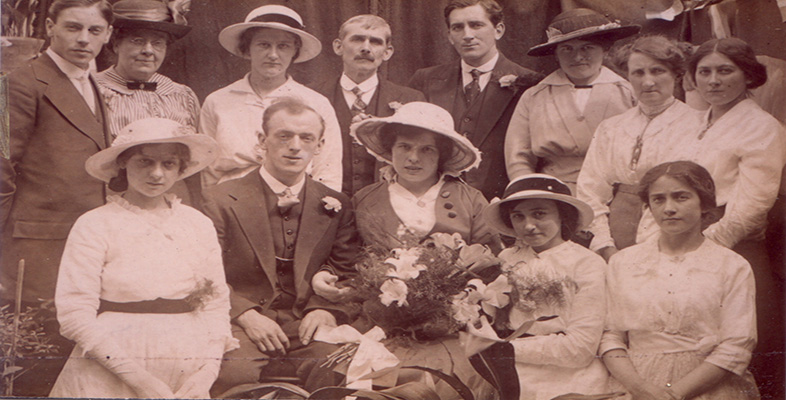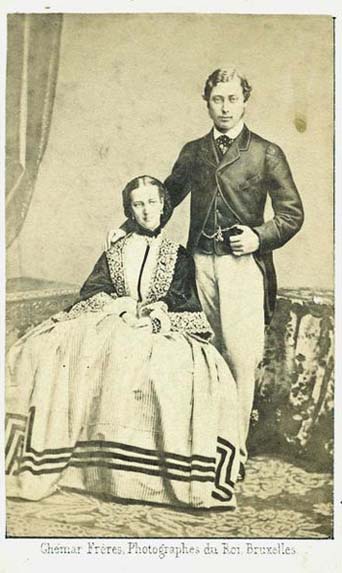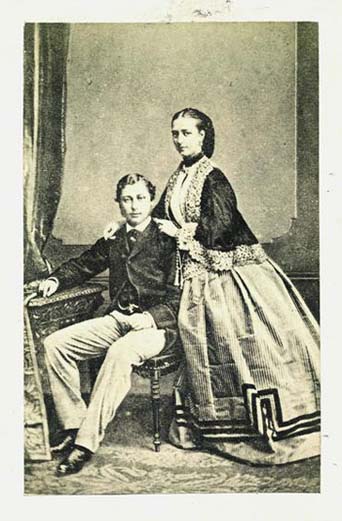4.5 Touch
Let's consider more closely the nature of touch and physical contact normally displayed in Victorian studio portraits.
Activity 11
Compare Images 25 and 26, which are portraits of Edward, Prince of Wales and his fiancée Alexandra. Notice in particular the different poses. These pictures formed part of a series issued by the reputable Belgian firm Ghémar Frères on the couple's engagement in 1862. Image 26, in which Alexandra has both hands on Edward's shoulders, provoked critical comment in the British press.
Pretty, is it not? – sentimental, sweet, and lover-like? Very – only not quite probable, or in the best taste. That a young lady may have stood, in that attitude oftender watching, at the chair ofher future husband, is likely enough, – but she would never think of being photographed at so confiding a moment. The lover would certainly object to the artist ‘posing’ his intended in any such way, and the lady herself would object to it with still greater vehemence. Can Paterfamilias possibly believe that the Prince and Princess allowed themselves to be shown after this fashion to the general gaze?
What conclusions can be drawn from the critic's comments? Note down your thoughts.
Answer
The public display of emotion conveyed through touch or physical contact was clearly regarded by the critic as bad taste and objectionable. The critic considers the ‘attitude of tender watching’ and ‘confiding’ moment as an act of intimacy which should properly be veiled in privacy. The critic expresses particular concern about the indelicacy of permitting a photographer to pose a lady in this way. The critic also feels that fathers, as heads of household and arbiters of family morals and behaviour, could not be expected to approve of such images entering the public arena. Remember that we have met this reaction against the public display of emotion before, in relation to emotion in facial expression.


